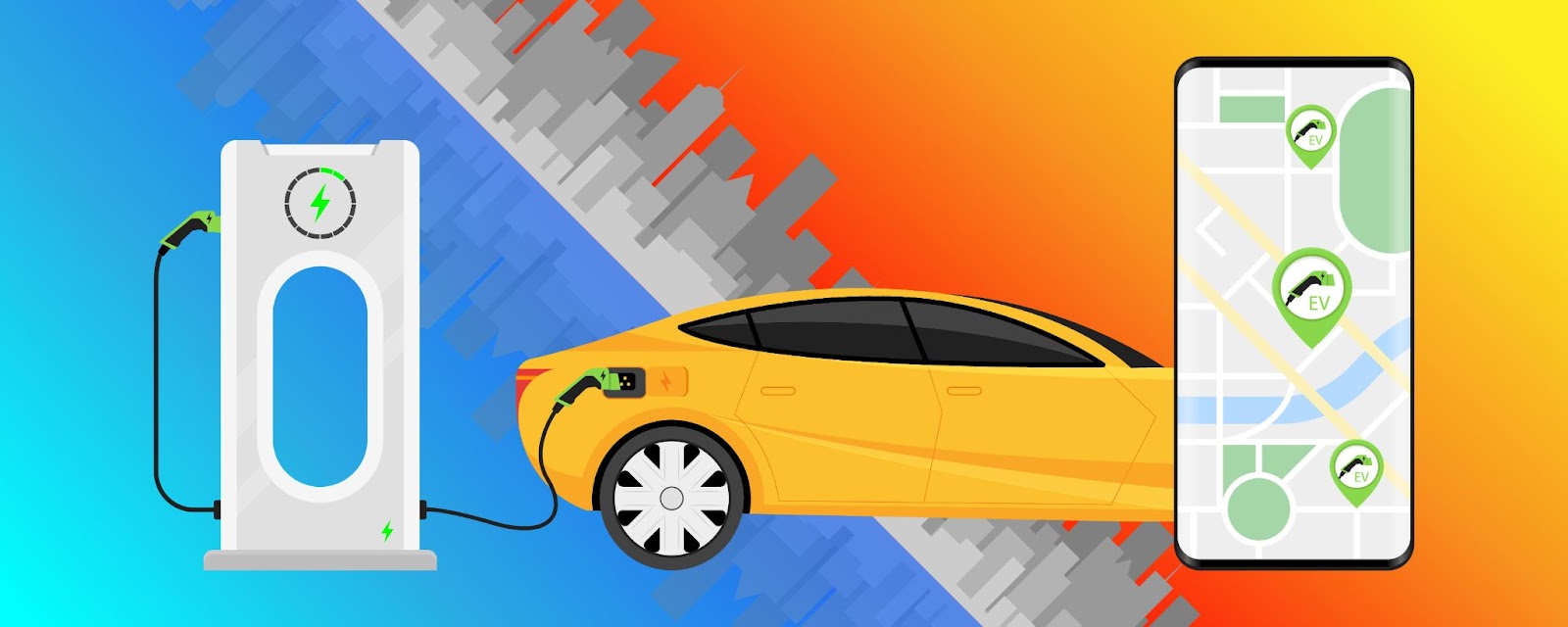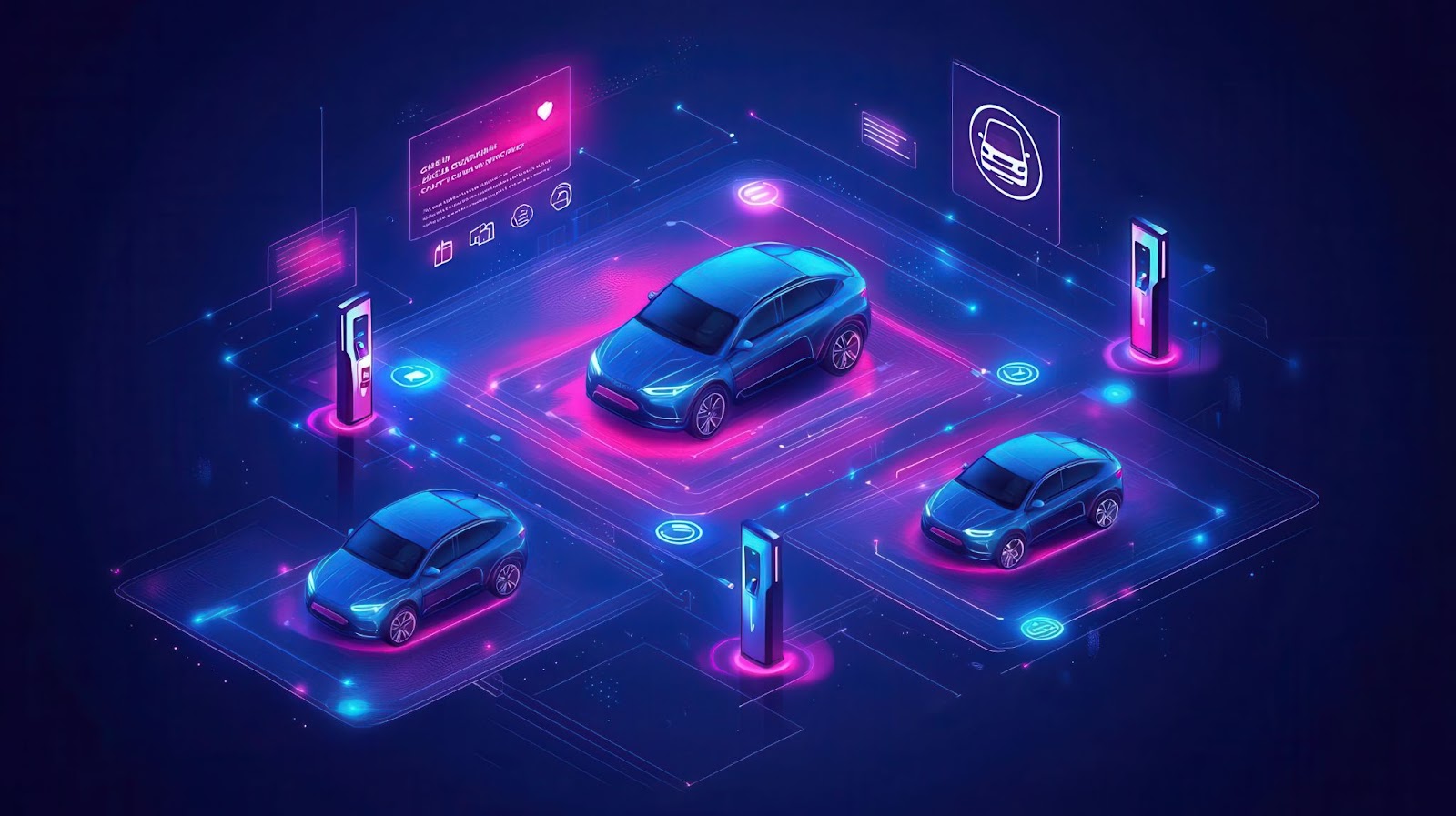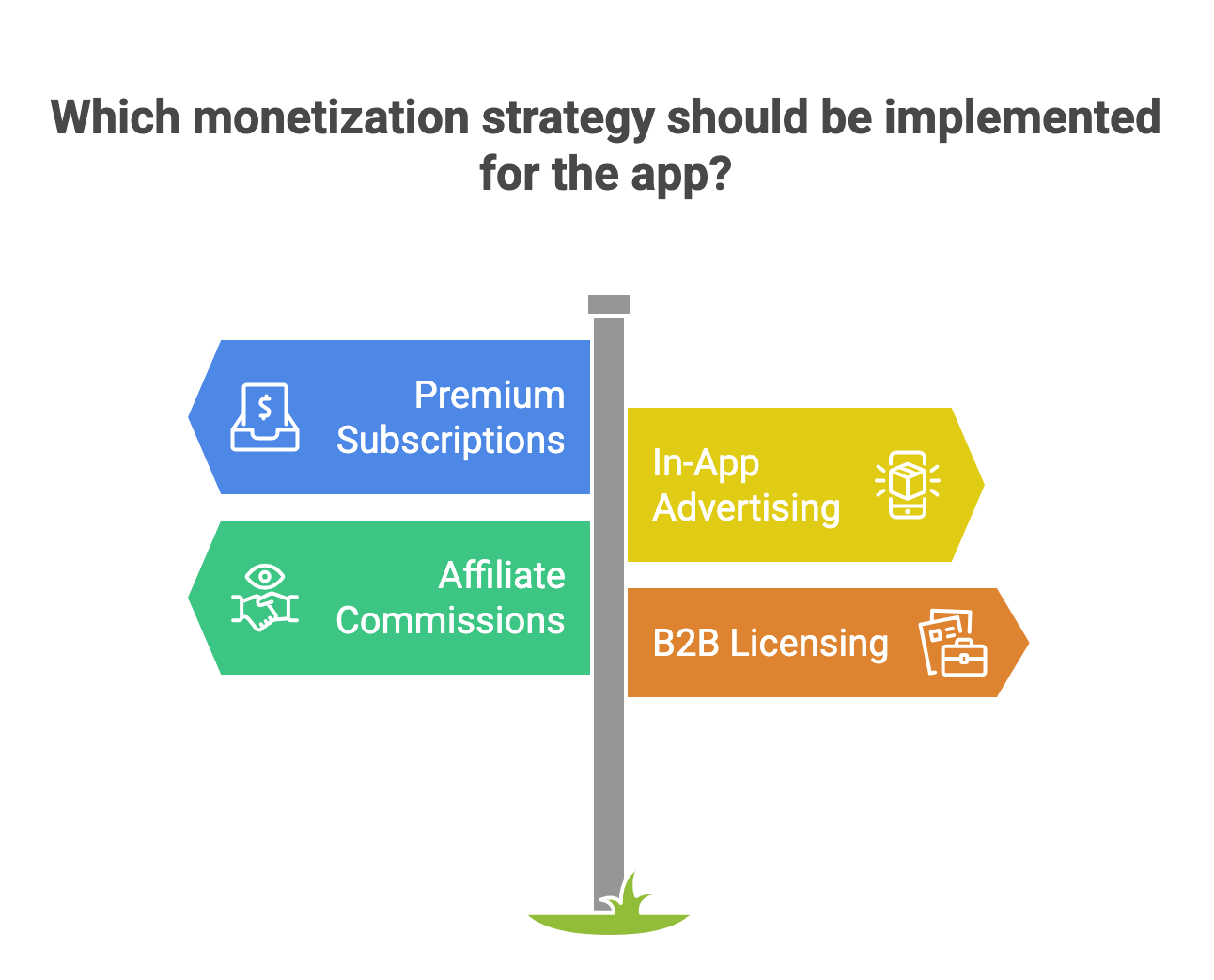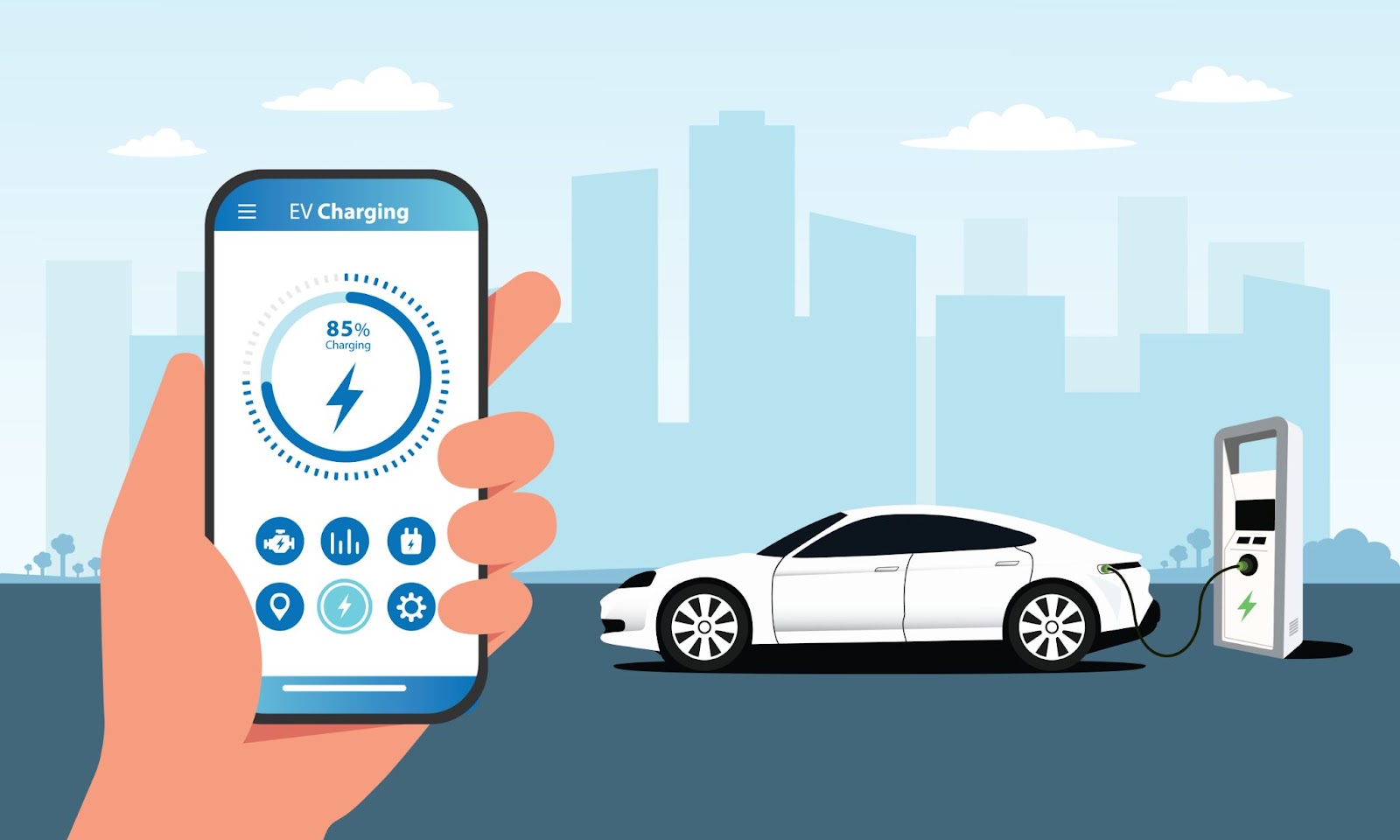|
Getting your Trinity Audio player ready...
|
The US is becoming a promising new market for electric vehicles (EVs), forecast by BloombergNEF to comprise 33% of global car sales by 2025, up from 14% in 2023. As this boom grows, the demand for a hassle-free, real-time means of locating EV charging stations nearby becomes pressing.
Whether for a road trip or daily commuting, the adoption of EVs has created a greater demand for accessible and reliable charging infrastructure. Range anxiety must be alleviated, while trip organisation must be made easy. Enter EV charger locator apps such as PlugShare, ChargePoint, and OpenChargeMap.
In this guide, we will take you through the basics of building your EV charger locator app, including user-defined features, technology stack recommendations, a roadmap for implementation, budget approximations, and monetization methods. By 2025, you will have a profitable and impactful product.
Market Overview & Trends
The electric vehicle ecosystem is developing rapidly. Forecasts indicate that global sales for EVs would surpass 17 million units by 2025, with China, Europe, and North America leading the way. This propelling trend demands a robust public and private charging infrastructure.
- Public charging points have grown more than 30 percent in depth of distribution each year, predominantly in urban areas and alongside major interstate highways.
- Private charging networks are sprouting in similar patterns owing to subsidies and other sustainability-related initiatives.
The behaviour of EV drivers has changed; earlier, they were limited by range anxiety from using electric vehicles, and now the challenge is planning their trips effectively. Most users desire real-time availability of stations, compatibility with charger types, and route filtering based on these factors to ensure a smooth start to their trip. The demand is not just for more chargers but for smart access to them.
The competitive landscape consists of PlugShare with its crowdsourced data model, ChargePoint with hardware-software integration, and OpenChargeMap with an open-source approach. An app that works well must learn from these competitors while creating a new and different user-driven experience.
User Personas & Use Case
Knowing your users would help in developing a relevant EV Charger Locator app. Below are the personas:
- Regular Commuters: Users typically search for charger locations in their vicinity to charge up their vehicles either between stops or while out for the day, running errands. The requirements include quick searches, information on availability, and clear pricing details.
- Long-Distance Travellers: Always preparing for one long journey or the other, these users seek route navigation and, along the highway, a charging pit stop. Customer experience must include real-time availability and some reservation options in advance.
- Fleet Managers: You have a lot of electric vehicles (EVs) to manage, and your job also includes synchronising times for usage and costs per site.
Use cases include charging in emergencies when the battery warnings sound and reserving chargers during peak times. This, coupled with user-friendly features such as booking, reviews, and live-status updates, adds great value and builds considerable confidence in the service.
Core Features

Now that you know what features need to be included in an EV charger locator app, let’s take a closer look at each of them, which must have benefits:
- Interactive Map with Real-Time Station Status
Charge charts should also include information about how to reach those places and which chargers have the best visibility, availability, and type of charging (Level 1, Level 2, or DC fast charging). Integrating live data feeds assures accurate updating so users can experience less frustration, wait time, and inaccurate attempts to locate charging stations.
- Search & Filter
Filtering results should be possible based on:
- Location radius
- Connector type (CHAdeMO, CCS, Tesla)
- Charging network (ChargePoint, EVgo, etc.)
- Pricing—free, paid, subscription-based
- This way, users can quickly find those chargers that meet their needs.
- Route Planning & Navigation
Integrate with Google Maps or Apple Maps API so that users can automatically create EV-friendly routes. Such routes will have charging stops calculated by taking vehicle range and availability of chargers into account.
- User Contributions & Reviews
Crowdsourced data boosts the value of the app. Users upload pictures and comment on or report on-the-spot cases (a broken charger, for example), which would enhance the reliability and trust of the listings.
- Favorites & History
Users can easily bookmark favourite stations and check visit history, a handy feature for daily commuters, especially when planning trips.
- Multi-Network Support & Booking
Consolidate data from multiple networks to make finding, comparing, and booking chargers across different providers available within one interface.
Advanced Features

To differentiate oneself in a tight competitive milieu, the addition of advanced, premium features can significantly enhance user value and revenue prospects.
- Reservation & Payment Integration
Allow users to reserve a charger ahead of time—this is usually appreciated during peak hours—and pay for it using any digital wallet or credit card via the app. This minimises the waiting time and increases the user’s confidence.
- Push Notifications & Alerts
Alerts are timely about:
- Proximity to station availability
- Changes in prices or discounts
- Expiry of the reservation reminder
They will help keep users occupied and well-informed.
- Community Features
User involvement increased through:
- Organizing group rides
- Awards
- Charging challenges and eco-driving rewards
This form of gamification nurtures a loyal user community.
- Analytics Dashboard for Fleet Managers
The dashboard is offered for the observance of
- Charger utilization,
- Trends in energy consumption,
- Monthly costs.
This is important for B2B fleet operations; it optimises costs and schedules.
Thus, with these features, a user has transformed the app from a functional tool into a well-developed partner for EV travel.
Technology Stack

The selection of the technology stack is the key determining factor in the two variables of scalability and speed of deployment.
Front-End:
- Flutter: Cross-platform UI building with excellent performance and a single codebase.
- React Native: Recommended for rapid development with a huge plugin ecosystem. Use it if Webb integration matters.
Back-End:
- Node.js with Express: Fast non-blocking I/O is the right key to geolocation queries to hold a large volume.
- Python Django REST: Preferred for rapid API implementations and security.
Mapping & Location Services:
- Google Maps API: Suited for global coverage, accurate geolocation, and street view support.
- Mapbox: A cost-effective alternative and customisable in visuals and developer-friendly.
Real-Time Data Management:
- WebSockets: Allows real-time communication (i.e., charger availability updates).
- Firebase Realtime Database: The best choice for MVPs with little server maintenance required.
Database:
- PostgreSQL + PostGIS extension: For complex geospatial queries used for efficient charger searches and route mapping.
Hosting & DevOps:
- Docker + Kubernetes: For containerised deployment and autoscaling
- AWS/GCP: Scalable cloud infrastructure with built-in security.
- CI/CD pipelines use GitHub Actions or Jenkins for accelerated and reliable releases.
This stack guarantees speed in deployment, agility in further developments, and resilience in the future.
Step-by-Step Development Process
What you have here is an exhaustive development roadmap for your EV charger locator app:
Phase 1: Discovery & Requirement Gathering
- Conduct stakeholder interviews and feed their inputs into feature prioritisation.
- Identify data sources: third-party APIs (OpenChargeMap), proprietary networks or possibly partnerships.
- Draft a user persona and key journeys.
Deliverables: Requirement docs, user stories, competitive analysis.
Phase 2: UX/UI Design
- Create design wireframes focusing on map UI, charger cards, and route planner.
- Create clickable prototypes for testing.
- Focus on intuitive navigation and minimalist design
Deliverables: Wireframes, clickable prototypes, and user feedback reports.
Phase 3: Core Development
- Setting up the backend along with database schemas and map APIs.
- Building user registration, login, and search functionalities.
- Setting up real-time charger status updates.
Deliverables: Functional MVP with map and search features.
Phase 4: Integration of Advanced Features
- Implement reservation logic and in-app payment systems (Stripe, Razorpay).
- Setting up notification systems (Firebase Cloud Messaging).
- Develop fleet dashboards and community features.
Deliverables: Fully functional premium-tier app.
Phase 5: QA & Testing
- Unit tests, UI tests, and automated geolocation validation tests must be run.
- Load and performance testing using JMeter and other tools.
- Use BrowserStack or AWS Device Farm to test real devices.
Deliverables: QA reports, bug fixes, launch readiness checklist.
Phase 6: Go Live & Post-Launch Support
- Optimise the listing for the App Store and Google Play.
- Set up monitoring (Datadog, New Relic) for app performance.
- Periodic updates and tracking feature usage.
Deliverables: Live app, monitoring dashboard, support plan.
Cost Breakdown & Influencing Factors
Developing an EV charger locator app involves several cost components. Here’s a breakdown:
Design & Prototyping ($5,000–$10,000)
- UI/UX design
- Wireframes
- User testing feedback
Core Development ($15,000–$30,000)
- Front-end and back-end development
- Map API integration
- Real-time updates
Advanced Features ($10,000–$20,000)
- Payment gateway integration
- Notifications
- Fleet analytics
Testing & QA ($5,000–$8,000)
- Manual and automated testing
- Cross-device testing
Deployment & Maintenance ($4,000–$10,000 annually)
- Hosting on AWS or GCP
- Database management
- Continuous geospatial data updates
Cost Influencers:
- Map API calls: Google Maps APIs are priced based on usage.
- Third-party integrations: Cost varies by network (e.g., ChargePoint API).
- Data licensing: Country-specific fees for charger data in some regions.
- Scalability: Additional costs for handling peak user loads.
Estimated Total:
MVP version: $35,000–$50,000
Full-featured version: $60,000–$80,000+
Monetization Strategies

If you want your app to be profitable, these are some of the revenue models to consider:
- Premium Subscriptions
Establish a monthly subscription plan, which will allow access to services like an ad-free experience, priority reservations, and more advanced route planning.
- In-App Advertising
Permit the charging networks or green tech companies to advertise within the app. Use location-based advertising to improve user targeting.
- Affiliate Commissions
Earn revenue through referral fees when you direct users to any paid charging station or other EV services partners.
- B2B Licensing
Make it available to fleet operators and logistics companies under a licensing model to use your platform. Pack in the analytics and management tools as well.
These strategies can be mixed for maximum revenue without compromising user experience.
Common Challenges & Solutions
Building an EV charger locator app presents numerous challenges:
- Accuracy & real-time update of the data
Solution: Connect charging networks in addition to allowing user submissions and validating them.
- Scalability & Performance
Solution: Handle enormous geospatial datasets using PostGIS, along with caching mechanisms.
- API Rate Limits & Costs
Solution: Cache batch queries and control the overhead by putting limits on API requests.
- User attraction
Solution: Gamify contributions by implementing badges and points, incorporating social features, and providing responsive support. It is better to respond proactively to ensure a smooth user experience and the longevity of the application.
Why Choose Esferasoft?
Esferasoft specialises in designing high-performance, location-based mobility applications. Our project offerings are focused on spatial intelligence, real-time navigation-based, and data visualisation-based applications.
Recently, we have built a solution for a client to manage tracking of vehicles using IoT, real-time maps, and predictive-routing functionality, which allows direct portability to facilitate an EV charger locator app.
We provide end-to-end UI design, API integration, cloud deployment, and after-sales support. Our dedicated QA team ensures good performance testing, while DevOps ensures a stable post-launch.
It is not simply an app-building contest with Esferasoft; it is an investment in a trusting partnership to develop the future of digital mobility.
Plug Into the Future: Your Roadmap to EV Innovation

EVs are emerging as a rapidly growing ecosystem, one of the best being a dependable, fully featured charger locator app, which can bring value to users and business returns. Every app can be an optimal performer with the right amount of core functionality and advanced features, accompanied by monetisation.
Ready to take the lead?
Collaborate with Esferasoft to build a personalised app for locating electric chargers. Customisation and expertise will turn your vision into success, like PlugShare.
Build your EV solution for 2025! Contact us today.

